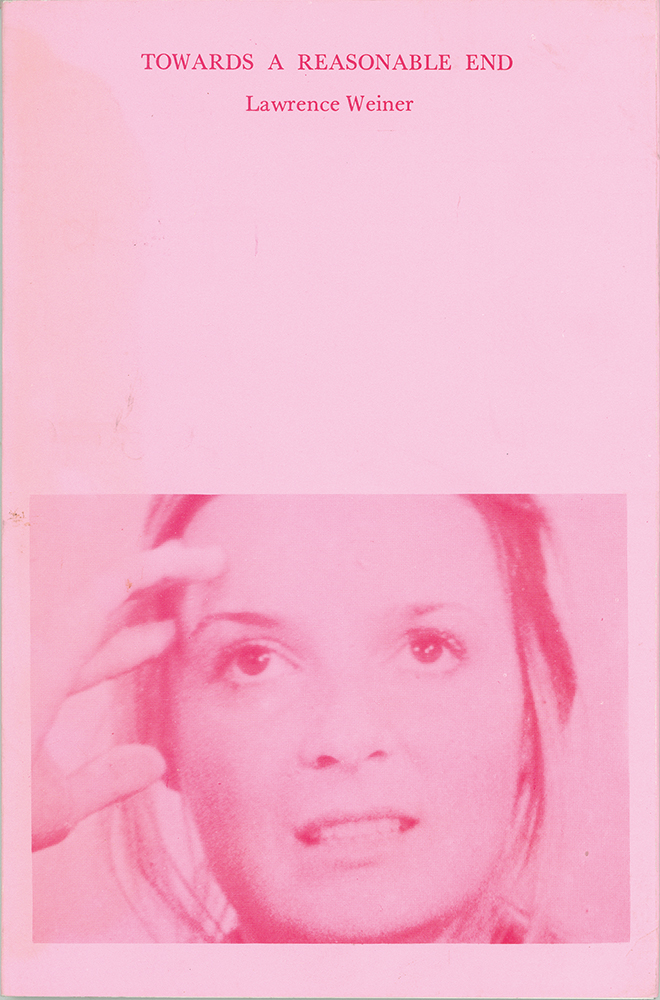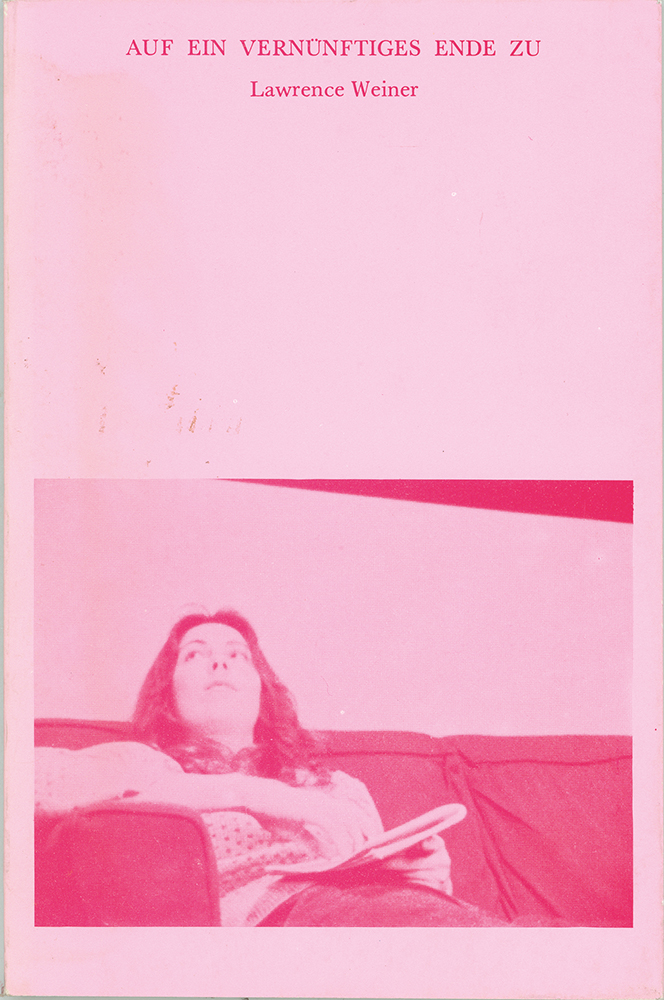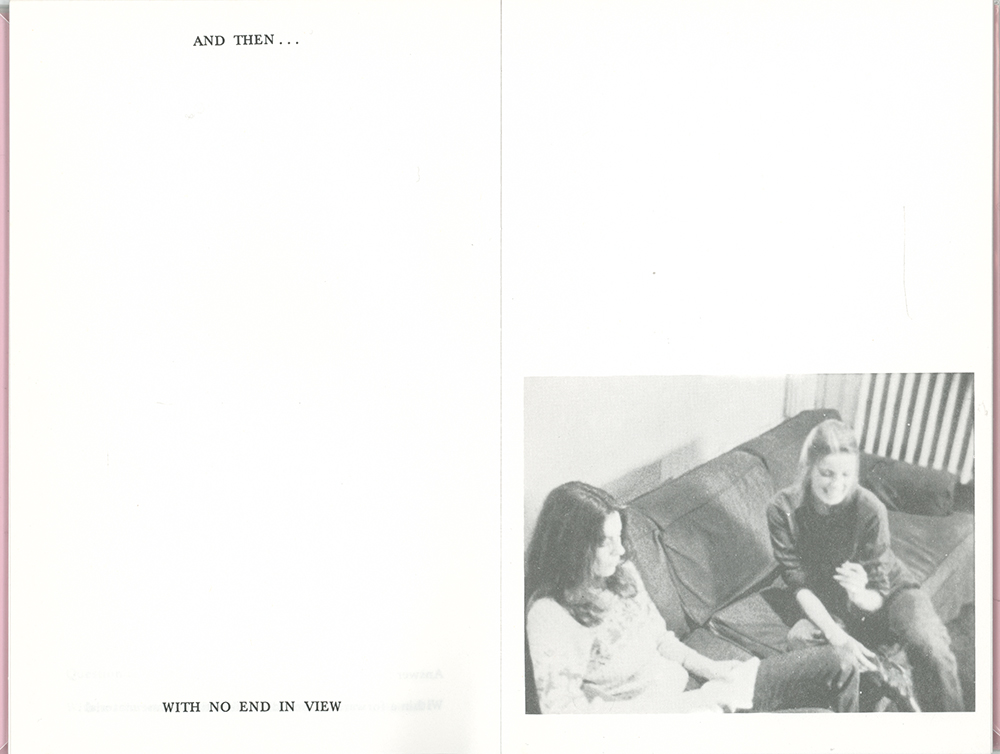WEINER Lawrence
(New York, Bronx 1942 - 2021)
Towards a Reasonable End. Auf ein vernünftiges Ende zu.
Luogo: Bremerhaven
Editore: Kabinett für aktuelle Kunst, in cooperation with Berliner Künstlerprogramm des DAAD.
Stampatore: N. D.
Anno: 1975
Legatura: brossura
Dimensioni: 16,7x11
Pagine: [70]
Descrizione: libro d'artista con copertina fotografica virata in rosa illustrato con 4 immagini fotografiche in bianco e nero scattate da Larry Williams e AZW (Alice Weiner). Testo originale inglese di L. Weiner stampato da pag. [1] a [34] e traduzione in tedesco di Jürgen Wesseler stampata nel verso opposto da pag. [70] a pag. [36]. Tiratura di 700 copie. Edizione originale.
Bibliografia: Lailach 2005: pag. 167; Schwarz 1989: n. 14, pp. 163-166
Prezzo: € 200ORDINA / ORDER
"The entwinement of temporal and narrative structure plays an important role in TOWARDS A REASONABLE END. Basically any sequence of elements, the pages of a book, the frames of a film, even montage, can be interpreted in narrative terms. Narrative functions as reference to the real context of a recipient, to the use of the book. The conjunction “AND THEN…,” which links the works in the book, is a terms used by film editors to introduce a new sequence. It is not imperative; it inquires about what comes next. The first of the book’s three movements, which contains the sequence, “AND THEN… WITH NO END IN VIEW,” presents a specific thought and also leads - “AND THEN…” - to the next one, namely to a photograph of two women apparently talking about a book that one of them is holding. The pictures places the content of the book in the context of a conversation; the statics of the photograph contradicts the subject matter of motion. This dualistic opposition is broken up by the rhetorical question, “Within a forward motion does dialogue become dialectic?”, and the no less rhetorical question, “Within a forward motion does dialogue become dialectic”. The photographs assume meaning as metaphors of the structure of the book and not as elements of a plot. In the second movement the question reads, “Within a forward motion does dialectic become material?”, and the reply, “Within a forward motion does dialectic become material.” The dialectical structure becomes a material experience in the process of reading, not only as an idea but as a construction. This leads to the question in the third movement, “When in motion is material dialectical?”, and its answer, “Within motion.” Here a distinction is made between material in the act of motion as opposed to material that is embedded in the context of motion, to wit, the autonomous motion of the material in the book as opposed to motion within a wider context. The dialectics of Weiner’s work does not constitute a self-sufficient entity whose inherent motion is the object of investigation; rather, it changes within the variation that govern the context which it functions and to which it contributes.” (Schwarz)



